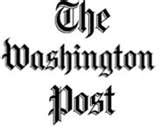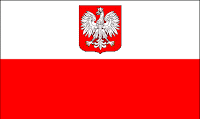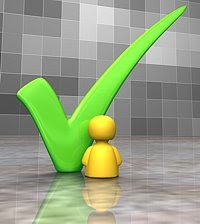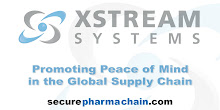 By: Alan Clock, Senior Vice President, XStream Systems
By: Alan Clock, Senior Vice President, XStream SystemsGary Noon the CEO of Aegate, argues the case for mass serialization in an editorial titled “Why We Need Mass Serialization – Now!” which appeared in the June issue of Pharmacy Technology Europe. In this article, Noon explains why point of dispensing drug authentication is not only a guarantee of medicine integrity, but also a beneficial and cost-effective solution for the pharmaceutical industry.
Noon cites many compelling statistics in his piece, most of these are statistics are centered on the European medication supply chain but their points are global:
Noon also correctly points out the danger of products that hit the legitimate market and the costs:
- In 2005, 2,500 packets of fake Lipitor, Pfizer's widely used anti-cholesterol medicine, were believed to have entered the UK market. Research by Frost & Sullivan estimates that fewer than 15% of the packs were recovered. Aside from the potential danger to patients this inability to effectively recall drugs poses, the damage to the reputations of individual manufacturers and to the industry as a whole is vast.
- According to the EU Commission consultation on combating counterfeiting medicines for human use, released in December 2008, the annual direct and indirect societal costs of counterfeiting are approximately €950 million. The overall costs of inaction will reach €9.5 billion–€116 billion by 2020, and this does not take into account the intangible yet significant damage to brand reputation and trust.
After Noon points out the compelling need for a solution, he leaps to the assumption that the only solution for this problem is via mass serialization of the supply chain. Basically he asserts that only a complex serialization solution from manufacturer to dispenser, which according to the an EU Commission consultant would result in staggering set up and annual costs across the supply chain, is the best and only way to secure the Pharmaceutical Supply Chain:
- An industry wide one- time cost of €11.5 billion to set up the proper systems within all members of the supply chain in Europe alone.
- Annual “running costs” for serialization with European companies to be €185.5 million for non-OTC companies. There were no estimates of costs associated to OTC companies.
- EU pharmacies would incur costs of installing the right IT and reading devices to support serialization estimated to be €157 million. Noon offered no estimates on the annual costs of running this the system.
We at XStream take a different view, frankly it doesn’t matter with what currency or market that you are serializing, Euros or Dollars, the costs are astronomical, very unrealistic given the current global economic malaise and the solution is so complex to implement it is very unlikely to impact the problem. Additionally it doesn't seem a stretch to make the point that the estimated costs are overly optimistic and and he is only referencing Europe.
What Noon does not factor in or discuss in this piece are the basic realities necessary to make serialization work:
Mass serialization requires that each member of the supply chain be perfectly in synch, every link in the chain and each company has to be in a virtual daisy chain process to make it work.
Each member's system and technology has to work seamlessly to process and communicate the serialization throughout the chain.
Although Noon makes this serialization synchonization sound simple and seemingly downplays the costs, practically it would prove to be nearly as impossible to globally integrate and effective as herding cats.
In any industry there is little hope that an entire supply chain could be efficiently managed, globally integrated and synchronized across the spectrum without significant effort and coordination. Mass serialization would require massive regulatory mandates, huge cost overruns in the billions (Euros and Dollars) and many years of significant legal arm twisting across multiple borders.
Even if, by chance, the supply chain was all properly serialized, integrated, managed and set up, all it would take would be one link failing in this “daisy chain” even temporarily for the entire system to fall apart.
Bottom line one single failure and the multiple billions in Euros or Dollars becomes wasted and the security and efficacy of the product in doubt.
Although we see limited merit in serialization, where we differ from Noon is that we realize, as most who have studied the issue of global pharmaceutical counterfeiting, is that there is no one single technology or solution to the problem.
Even though there is no technology or singular solution that can offer comprehensive protection from raw materials to dispensing and ultimately consumption by the consumer; it is a battle that all within the pharmaceutical supply chain should join in to solve.
Serialization, like other Track and Trace solutions such as RFID, Pedigrees and Bar Codes has its place and uses and we believe can and should be a part of any sophisticated supply chain. But in order to properly protect the supply chain and the consumer comprehensively, a system and process of screening the actual product, not just the transaction or package, is necessary to eliminate fraudulent and counterfeit medications.
In recent memory there have been a variety of fraudulent and counterfeit medications that have passed through the global pharmaceutical supply chain, in most cases nearly all would have passed a pedigree, packaging tag or serial code but their contents impacted the health of those who consumed it.
Analytical screening throughout the process takes away the “daisy chain” effect which mandates and requires participation by all to be effective. By using technology like EDXRD, XStream’s XT250 can screen and validate the medication inside its sealed container, creating an instant pedigree while authenticating the medication inside the package is efficacious.
Screening and authentication technologies do not require complex integrations and can be deployed anywhere within the supply chain to validate the safety of the inventories on hand. Additionally screening solutions, at the point of dispense, can assist providers from averting medication and dispensing errors. The cost of implementing screening solutions would be a fraction of a mass serialization solution and could be deployed almost immediately.
Overall, we are not completely dismissing Mr. Noon’s point as it relates to the need for a solution; we do however take exception to his conclusion that Serialization is the only answer. XStream Systems believes that governments and industry need to deploy a variety of tactics and technology to defeat fraudulent and counterfeit medications and we do not believe that it will requires tens of billions of Euros or Dollars to begin the process. XStream suggests that each member of the supply chain needs to understand their place and responsibility within the chain and deploy the proper tools to secure it so that we can all have faith that the medications we supply and consume are safe.
 The Philippines Daily Inquirer ran the following story about Bureau of Food and Drugs warning consumers and pharmacy providers about a fake flu vaccine.
The Philippines Daily Inquirer ran the following story about Bureau of Food and Drugs warning consumers and pharmacy providers about a fake flu vaccine. 
























